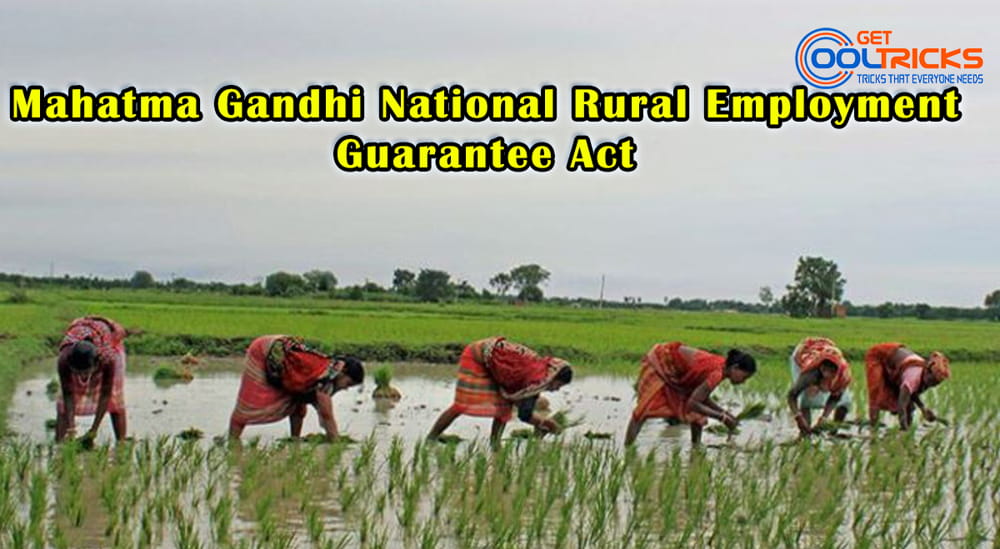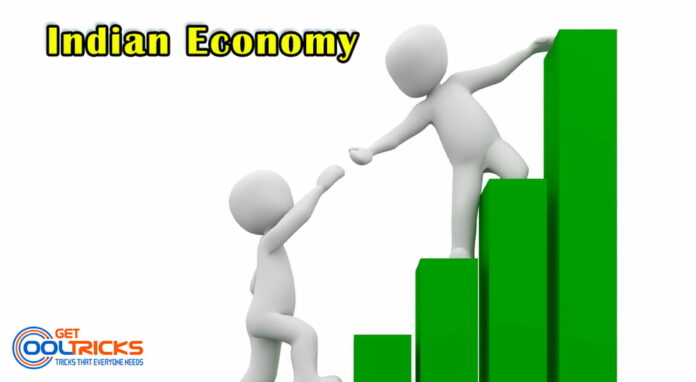Pradhan Mantri Gram Sadak Yojana
- This Scheme was launched on 25 December 2000 by then Prime Minister Atal Bihari Vajpayee
- The scheme aims at enhancing rural road connectivity.
- This scheme provides connectivity to the habitations with less or no connectivity at all and helps in poverty reduction by promoting access to economic and social services.
- This ensures sustainable poverty reduction in the long run as people get an opportunity to get connected with the rest of the world.
- The scheme has been benefiting several villagers and is helping them lead better lives. Nearly 82% of roads have been built till December 2017 which have successfully connected several rural areas to cities.
Pradhan Mantri Gram Sadak Yojana
Deen Dayal Antyodaya Yojana
- Swarnjayanti Gram Swarozgar Yojana which is redesigned as National Rural Livelihood Mission was launched in 2011 by the Ministry of Rural Develop.
- Also known as Ajeevika, this scheme aims at empowering women with self-help models across the country.
- Under this scheme, the government provides a loan of 3 lakh rupees at an interest rate of 7% which can be reduced to 4% at the time of repayment.
- The scheme was aided by World Bank and aimed at creating efficient and also effective institutional platforms for poor people.
- It also helped in increasing household income by improving access to financial services.
- NRLM also helps in harnessing the capabilities of the poor so that they can participate in the growth of the economy of the country.
Prime Minister’s Rural Development Fellowship Scheme
- The Prime Minister Rural Development Fellowship (PMRDF) is a scheme initiated by the Ministry of Rural Development, implemented in collaboration with State Governments.
- It has dual goals of providing short-term support to the district administration in the underdeveloped and remote areas of the country and developing competent and committed leaders and facilitators who can serve as a resource for the long term.
Prime Minister’s Rural Development Fellowship Scheme PDF
Mahatma Gandhi National Rural Employment Guarantee Act (MGNREGA)
Also Read Article MGNREGA

- Mahatma Gandhi National Rural Employment Guarantee Act (MGNREGA) of 2005, 100 days of employment is guaranteed to any rural household adult who is willing to do unskilled manual work in a financial year.
- The Act addresses the working people and their fundamental right to live life with dignity.
- If a person does not get a job within 15 days, he is eligible for getting unemployment allowance. National Rural Employment Guarantee Act (NREGA) also highlights the importance of basic right to work.
- Amendments have been introduced to this act to minimize corruption in the scheme.
- MGNREGA has covered more than 700 districts in India.
Sampoorna Grameen Rozgar Yojana (SGRY)
- The Sampoorna Grameen Rozgar Yojana (SGRY) was launched in 2001 to provide employment to the poor.
- It also aimed at providing food to people in areas who live below the poverty line and improving their nutritional levels.
- Other objectives of this Yojana were to provide social and economic assets to the people living in rural areas.
- The scheme did not include the employment of contractors or middlemen.
Samagra Siksha Abhiyan
- Former Prime Minister Atal Bihari Bajpayee, the Sarv Siksha Abhiyan was launched in 2000.
- However, in 2018, the Samagra Siksha Abhiyan subsumed the three schemes Rashtriya Madhyamik Shiksha Abhiyan(RMSA), Teacher Education and the Sarva Siksha Abhiyan.
- It is an attempt to provide an opportunity for all children to get free education which is also a basic fundamental right.
- The state and the central government share the expenses of this project with the central government covering 85% of the expenditure and the state sharing 15% of it.
- In the 2022 budget, the government has allotted over 37,383 crores to the scheme.
Sansad Adarsh Gram Yojana (SAGY)
- Sansad Adarsh Gram Yojana (SAGY) is a rural development project launched in 2014 by the Government of India in which each Member of Parliament will take responsibility for three villages and look after the personal, human, social, environmental and economic development of the villages.
- This would substantially improve the standard of living as well as the quality of life in the villages.
- No funding has been provided to this project as funding can be raised through existing schemes.
Deen Dayal Upadhyaya Grameen Kaushalya Yojana
- Deen Dayal Upadhyaya Grameen Kaushalya Yojana, a part of the National Livelihood Mission, has the objectives of catering to the career aspirations of rural youth and adding diversity to the income of rural families.
- Launched on 25th September 2014, the scheme’s prime focus is on the rural youth of poor families aged between 15 and 35.
- An amount of Rs 1500 crores has been provided for the scheme which will help in enhancing employability.
- The yojana is present in 21 States and Union Territories across 568 districts and 6215 blocks changing the lives of youth.
National Social Assistance Programme (NSAP)
- National Social Assistance Programme signifies the fulfilment of Directive Principles in Articles 41 and 42 of the constitution which states that it is the duty of the state to provide assistance to the citizens in terms of sickness, unemployment, and old age in limits of the economic capabilities.
- It is basically a centrally sponsored scheme of the Government of India which provides financial help to widows, the elderly, and people with disability in form of pensions.
- The scheme was launched on August 15 in 1995. Until now the NSAP has more than 2.9 crore beneficiaries and by adding 1.5 crore state beneficiaries, the total adds up to more than 4 crore people who reap the benefits of this program.
Pradhan Mantri Awaas Yojana (Gramin)/ Indira Awas Yojana
- Indira Awas Yojana revamped as Pradhan Mantri Gramin Awaas Yojana in 2016 is a welfare programme created by the Indian Government to provide housing to rural poor people in India.
- The goal of this scheme is to provide homes to all citizens till 2022.
- The cost of constructing the houses will be shared by the centre and the state.
- The scheme has been implemented in rural areas throughout India, except in Delhi and Chandigarh.
- Houses developed under this scheme will have basic amenities such as toilets, electricity connection, drinking water connection, LPG connection etc.
- The allotted houses will be jointly under the name of the husband and wife.
- Until now 1.2 crore houses have been sanctioned with almost 58 Lakh houses completed.
Antyodaya Anna Yojana (AAY)
- Launched by former Prime Minister Atal Bihari Vajpayee in 2000, the Antyodaya Anna Yojana aimed at providing food grains to around 2 crore people at subsidised rates.
- As per the scheme Below Poverty Line (BPL) families were provided 35 kgs of food grains.
- Rice was provided at the rate of Rs 3/kg and wheat at the rate of Rs 2/kg.
- The scheme was first launched in Rajasthan but has now been implemented in all Indian states.
Provision of Urban Amenities In Rural Areas (PURA)
- PURA is a strategy for Rural Development in India which was proposed by former President APJ Abdul Kalam in his book Target 3 billion.
- PURA proposes that urban infrastructure and services should be provided in rural areas to create opportunities outside the cities. This will also prevent the migration of youth from rural areas to urban areas.
- The Central Government has been running PURA programs in various states since its launch in 2004.
Heritage Development and Augmentation Yojna (HRIDAY):
- This scheme was launched on the 21 January 2015 under the care of The Union Ministry of Urban Development.
- Its aim is to preserve and rejuvenate the rich cultural heritage of the country.
- In the initial phase of HRIDAY, 12 heritage cities have been identified which will be rejuvenated and developed. Union Government will provide 500 crore rupees to these 12 cities.
Training to Rural Youth for Self-Employment (TRYSEM)
- This centrally sponsored programme was started on august 15, 1979.
- The main target of this scheme was to provide technical and business expertise to rural BPL people who are in the age group of 18-35.
- This programme has been merged with Swarn Jayanti Gram Swarojgar Yojna on April 1, 1999.
Antyodaya Anna Yojna (AAY)
- The scheme was launched by Prime Minister Atal Bihari Vajpayee on 25 December 2000.
- The scheme provides food grains to around 2 cr. Poverty Line (BPL) families at a very subsidized rate.
- A total of 35 kgs of food grains is provided to a family. Rice is provided at the rate of Rs. 3/kg and wheat at 2 Rs.2/kg.
Village Grain Bank Scheme
- This scheme was implemented by the department of food and public distribution.
- Main objective of this scheme is to provide safeguard against starvation during the period of natural calamity or during lean season when marginalized food insecure households do not have sufficient resources to purchase rations.
- Under this scheme, needy people will be able to borrow food grains from the village grain bank and return it when they have abundant food.
Aam Aadmi Bima Yojna
- It was launched on october 2, 2007.
- It’s a social security scheme for rural households.
- Under this scheme, one member of the family is covered.
- The premium of Rs. 200 per person per annum is shared by the state and central government. V. The insured person need not to pay any premium if his/her age is between 18 years to 59 years.
Kutir Jyoti Programme
- This programme was launched in 1988-89.
- Its main motive was to improve the standard of living of scheduled castes and scheduled tribes including the rural families who live below the poverty line.
- Under this programme, government assistance of Rs. 400 is provided to families who are living below the poverty line for single-point electricity connections in their houses.


